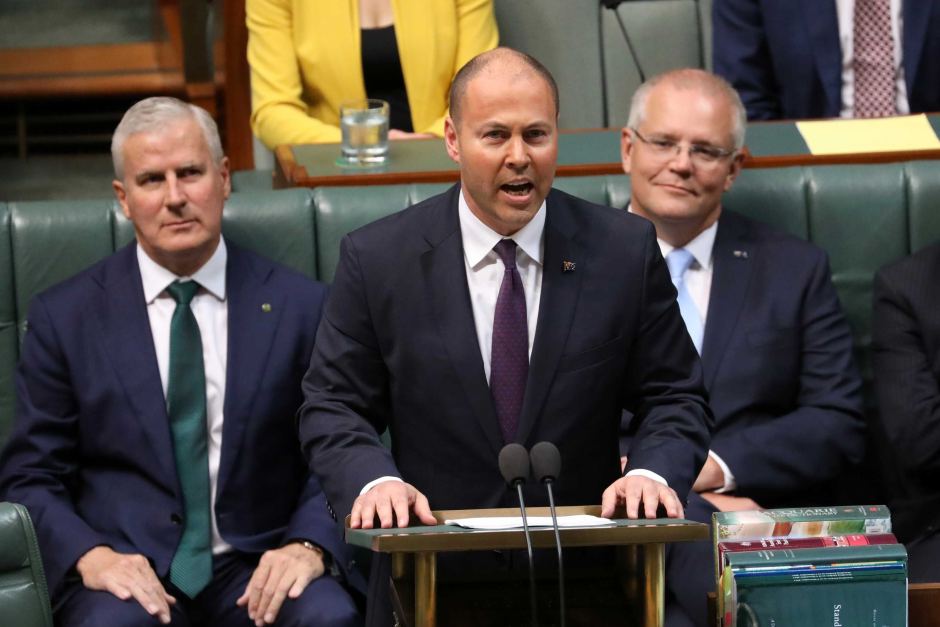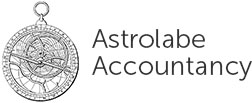Federal Budget 2021-22: What it means for you
 Treasurer Josh Frydenberg has released the 2021-22 Federal Budget and confirmed Australia’s economy is performing more strongly than was expected six months ago. This article has a summary of the “Winners and Losers” of the 2021-22 Budget and we’ve compiled a recap of the key points below. Get in touch with us if you have any questions.
Treasurer Josh Frydenberg has released the 2021-22 Federal Budget and confirmed Australia’s economy is performing more strongly than was expected six months ago. This article has a summary of the “Winners and Losers” of the 2021-22 Budget and we’ve compiled a recap of the key points below. Get in touch with us if you have any questions.
A Quick Overview
- This budget assumes our international borders won’t reopen until mid-2022.
- $1.9 billion has been allocated for our vaccine strategy over the next 5 years. This includes money set aside for production of mRNA vaccine in Australia.
- The Low and Middle Income Tax Offset has been extended for another year.
- The instant asset write-off has been extended for eligible businesses.
- Superannuation changes planned including repealing the work test for voluntary contributions and expanding the First Home Super Saver Scheme.
- $17.7 billion in funding for aged care including home care packages and a Basic Daily Fee.
- More than a billion dollars will go towards the Childcare Subsidy Scheme.
- There is funding for women’s health programs including cervical and breast cancer screening, depression services for new mothers, endometriosis education and programs to reduce domestic and family violence.
- The JobTrainer program and apprentice and trainee wage subsidy programs have been expanded.
- Billions will be invested in Mental Health programs including early intervention and aftercare.
- Farmers to benefit from the asset write-off, biosecurity measures and National Soil Strategy rebates.
- Funding for startups, particularly medical startups, has been announced. This is designed to make Australia an attractive place to start and grow a business.
- The 2021-22 budget includes tax relief for small brewers and distillers.
The Virus
As expected, the government has expanded funding for our vaccine strategy, with $1.9 billion set aside for the next five years. A pool of money is also allocated to invest in mRNA vaccine production in Australia. There is also an additional $1.5 billion for COVID-related health services like testing and contact tracing.
Tax Offset Extended
The “Low and Middle Income Tax Offset” will remain in place for another year. The tax rebate, which is received after completing your tax returns, depends on your income group. Read more about the offset here, or get in touch with us for more details.
Asset write-off extension for businesses
Last year’s asset write-offs are being extended by another 12 months. This means businesses with a turnover of up to $5 billion will be able to write off the full value of any eligible asset. This might be a work vehicle or piece of equipment you’ve bought between the last October budget and June 30, 2023.
The extension also means any losses incurred up to June 2023 can be offset against prior profits made going back to the 2018-19 financial year.
Super
Relaxed residency changes for SMSFs
The 2021-22 budget confirms the Government will relax residency requirements for SMSFs and small APRA-regulated funds by extending the central control and management test safe harbour from two to five years. The active member test will also be removed, allowing members who are temporarily absent to continue to contribute to their SMSF.
Removing the work test for voluntary contributions
Individuals aged 67 to 74 will be able to make non-concessional or salary sacrifice contributions without meeting the work test, subject to existing contribution caps and existing total superannuation balance limits. This change is designed to boost the balances of those who haven’t had the long-term benefits of compulsory superannuation.
Age for downsizer scheme reduced
The minimum age for those eligible for the downsizer scheme will be reduced from 65 to 60. The scheme allows a person to make a $300,000 contribution to their superannuation fund after the sale of their home, if they have lived there for 10 years. It is intended to encourage older people to sell family homes, freeing up property for younger generations.
Changes to threshold for superannuation guarantee eligibility
Australians earning less than $450 a month will receive superannuation payments following the removal of the income threshold.
First Home Super Saver Scheme
First home buyers will be able to access up to $50,000 of additional voluntary concession and non-concessional contributions from their superannuation funds, which is up from $30,000.
The First Home Super Saver Scheme is designed to help first home buyers raise a deposit quicker.
Pension Loans Scheme
Funding has been allocated to improve uptake of the pension loans scheme. This scheme is a voluntary, reverse-mortgage type loan to assist older Australians to unlock equity in their houses and boost their retirement income.
Aged Care
The Royal Commission into aged care made it very clear that Australia’s aged care system needs improvement. In response, the Government has put a significant amount ($17.7 billion) towards aged care over the next five years. The money will be spent on 80,000 new home care packages and there’ll be a government-funded “Basic Daily Fee” supplement of $10 per resident a day for providers to improve care and services.
There is also money allocated to make it easier for seniors to navigate the aged care system, including funding for a new star rating system to make the performance of aged care providers clearer.
Childcare
Another “winner” here with $1.7 billion over the next three years for the childcare industry. This will go toward changes to the Childcare Subsidy Scheme (starting July 2022). If you have one child in childcare, the subsidy stays at 65 per cent but if you have two or more, it’s 95 per cent for each child.
International Tourism
The last budget in October was based on assumptions that international borders would begin gradually reopening towards the end of 2021. Given the slow vaccine rollout and ongoing outbreaks overseas, the government is now saying the border won’t open until at least mid-2022.
This is bad news for tourism operators who rely on international visitors. Last year’s budget included $60 million to help some tourism businesses diversify their markets, but there’s little extra support this year.
Women’s Health
The Federal Government is allocating $354 million for women’s health which will cover a variety of initiatives including improving cervical and breast cancer screening programs, depression services for pregnant women and new mothers, screening of embryos during IVF, reducing pre-term birth rates, especially among Indigenous communities, reducing eating disorders and other health initiatives including endometriosis education and pain management programs.
There is also $998 million for reducing domestic and family violence, supporting survivors and a trial program has been announced which gives women fleeing violent relationships up to $5,000 in assistance, split into a $1,500 payment and $3,500 in expenses like rent, legal fees and furniture.
To help women when it comes to retirement, the government is now introducing a scheme where employees who earn less than $450 a month will be paid the superannuation guarantee. More details on the Women’s Health funding can be found here.
Youth and employment schemes
An additional $500 million over two years will be directed to the JobTrainer program to create around 163,000 places and reduce the youth unemployment rate. The JobTrainer scheme unveiled last year is a government plan to drive job creation by up-skilling school leavers or people who are unemployed through free or low-fee courses.
The supporting apprentices and trainees wage subsidy scheme is also being extended. This program reimburses employers 50 per cent of an apprentice’s or trainee’s wage for the first year, up to a cap of $7000 per quarter.
Mental Health
An additional $2.3 billion will be invested into the National Mental Health and Suicide Prevention Plan. There’s funding set aside for early intervention, including a new digital platform to provide online counselling. $298 million will go directly towards suicide prevention with the federal government aiming to with the states and territories to fund aftercare for every person discharged from hospital after a suicide attempt. The majority of the funding will go to treatment though, with a new national network of mental health treatment centres for adults, youth and kids to be set up.
There is also money allocated to increase the workforce, offering scholarships and clinical placements for nurses, psychologists and allied health practitioners in the mental health space.
Support for Farmers
Our farmers can benefit from the asset write-off (extended until June 2023) but there’s also $200 million allocated for a National Soil Strategy which includes rebates for farmers that share soil testing results. The government will also waive almost $15 million of debt owed by more than 5,000 farmers receiving the Farm Household Allowance from Centrelink.
Start Ups
A new tax program has been announced which is aimed at encouraging medical and biotech companies to stay in Australia while they develop and then sell their ideas. The “patent box tax regime” will tax any income from a company’s patent at a concessional rate of 17 per cent starting from July 1, 2022. This is compared to 30 per cent tax rate for large businesses and 25 per cent for small-medium businesses.
The government is focusing on start up businesses with $500 million in other new measures to make Australia an ideal place for businesses. Measures include reducing red tape and encouraging employee share schemes.
Tax relief for small brewers and distillers
A win for the little guys here with small brewers and distillers getting more help this year. From July 1 2021 anyone who is eligible will be handed back up to $350,000 worth of taxes.
Gaming
A 30% refundable Digital Games Tax Offset has been announced to attract more of the global game market to Australia. To get the offset, eligible businesses have to spend at least $500,000 on certain games expenditure. The finer details are still being decided.
There are a few more measures announced which we haven’t covered off here. Feel free to read more in this article.
Get in touch
Please get in touch with us if you have any questions.
